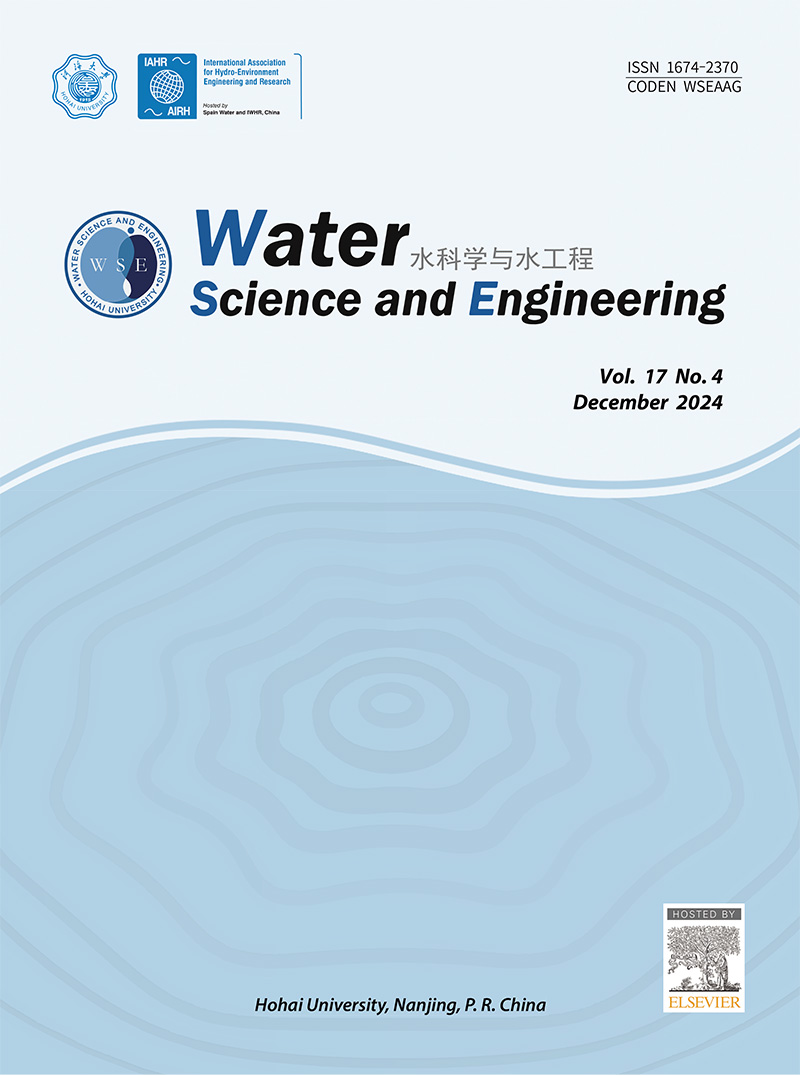Spatiotemporal changes and interconnections between meteorological and hydrological droughts in China over past 34 years
IF 4.3
Q1 WATER RESOURCES
引用次数: 0
Abstract
Understanding the evolution and lag effects of droughts is critical to effective drought warning and water resources management. However, due to limited hydrological data, few studies have examined hydrological droughts and their lag time from meteorological droughts at a daily scale. In this study, precipitation data were collected to calculate the standardized precipitation index (SPI), and runoff data simulated by the variable infiltration capacity (VIC) model were utilized to compute the standardized runoff index (SRI). The three-threshold run theory was used to identify drought characteristics in China. These drought characteristics were utilized to investigate spatiotemporal variations, seasonal trends, and temporal changes in areas affected by meteorological and hydrological droughts. Additionally, the interconnections and lag effects between meteorological and hydrological droughts were explored. The results indicated that (1) drought occurred during approximately 28% of the past 34 years in China; (2) drought conditions tended to worsen in autumn and weaken in winter; (3) drought-affected areas shifted from northwest to northeast and finally to southern China; and (4) the correlation between meteorological and hydrological droughts was lower in the northwest and higher in the southeast, with all correlation coefficients exceeding 0.7. The lag times between meteorological and hydrological droughts were longest (5 d) in the Yangtze River, Yellow River, and Hai River basins, and shortest (0 d) in the Tarim River Basin. This study provides a scientific basis for effective early warning of droughts.
近34年来中国气象水文干旱的时空变化及其相互关系
了解干旱的演变和滞后效应对有效的干旱预警和水资源管理至关重要。然而,由于水文资料有限,很少有研究在日尺度上考察水文干旱及其与气象干旱的滞后时间。本研究利用降水数据计算标准化降水指数(SPI),利用变入渗量(VIC)模型模拟的径流数据计算标准化径流指数(SRI)。采用三阈值运行理论对中国干旱特征进行了识别。利用这些干旱特征研究气象水文干旱影响区域的时空变化、季节趋势和时间变化。此外,还探讨了气象干旱与水文干旱之间的相互联系和滞后效应。结果表明:(1)中国近34 a干旱发生率约为28%;(2)秋季旱情加重,冬季旱情减弱;③干旱地区由西北向东北转移,最终向南方转移;④气象干旱与水文干旱的相关性呈现西北低东南高的趋势,相关系数均超过0.7。长江、黄河和海河流域气象水文干旱滞后时间最长(5 d),塔里木河流域最短(0 d)。该研究为有效的干旱预警提供了科学依据。
本文章由计算机程序翻译,如有差异,请以英文原文为准。
求助全文
约1分钟内获得全文
求助全文
来源期刊

Water science and engineering
WATER RESOURCES-
CiteScore
6.60
自引率
5.00%
发文量
573
审稿时长
50 weeks
期刊介绍:
Water Science and Engineering journal is an international, peer-reviewed research publication covering new concepts, theories, methods, and techniques related to water issues. The journal aims to publish research that helps advance the theoretical and practical understanding of water resources, aquatic environment, aquatic ecology, and water engineering, with emphases placed on the innovation and applicability of science and technology in large-scale hydropower project construction, large river and lake regulation, inter-basin water transfer, hydroelectric energy development, ecological restoration, the development of new materials, and sustainable utilization of water resources.
 求助内容:
求助内容: 应助结果提醒方式:
应助结果提醒方式:


